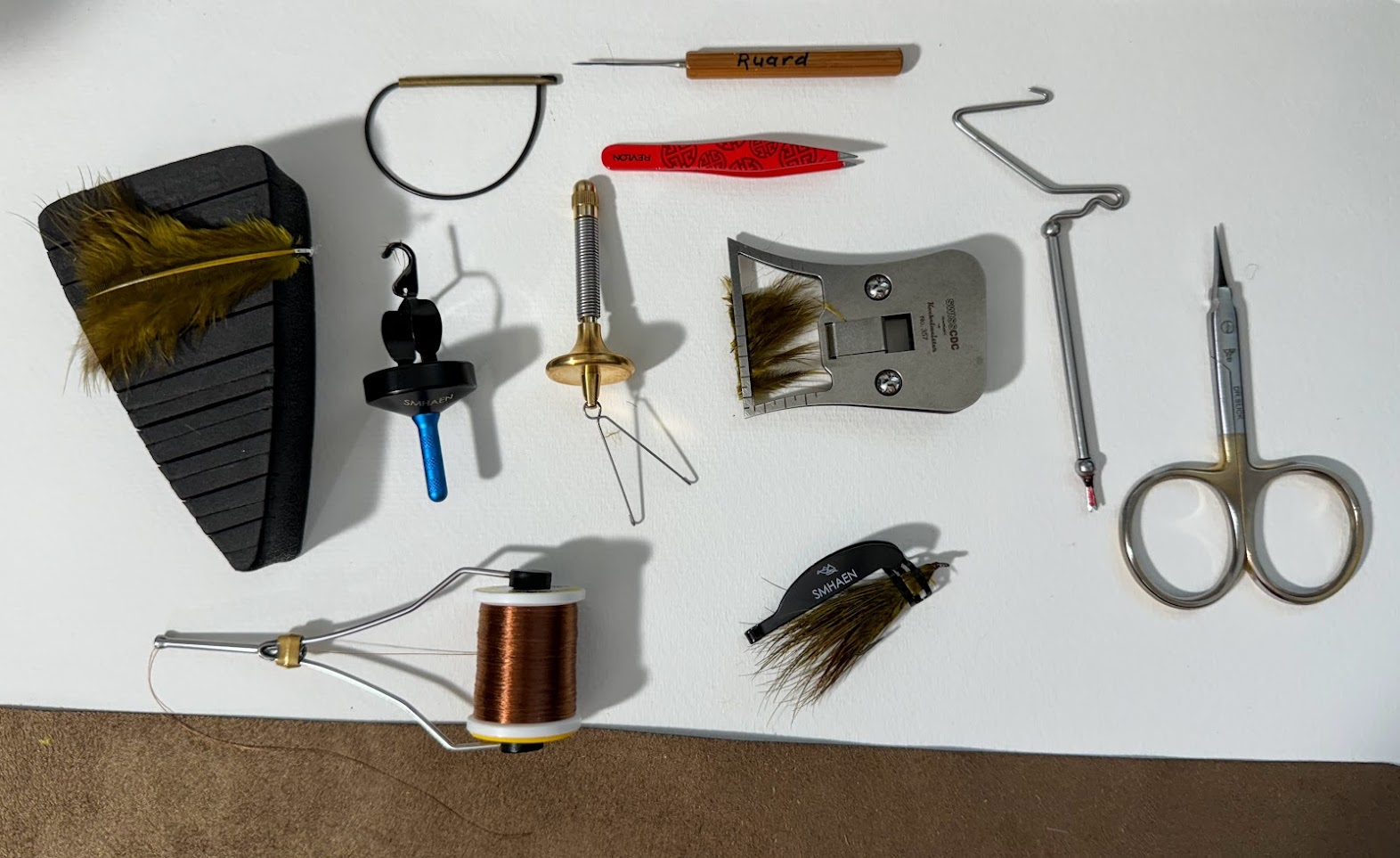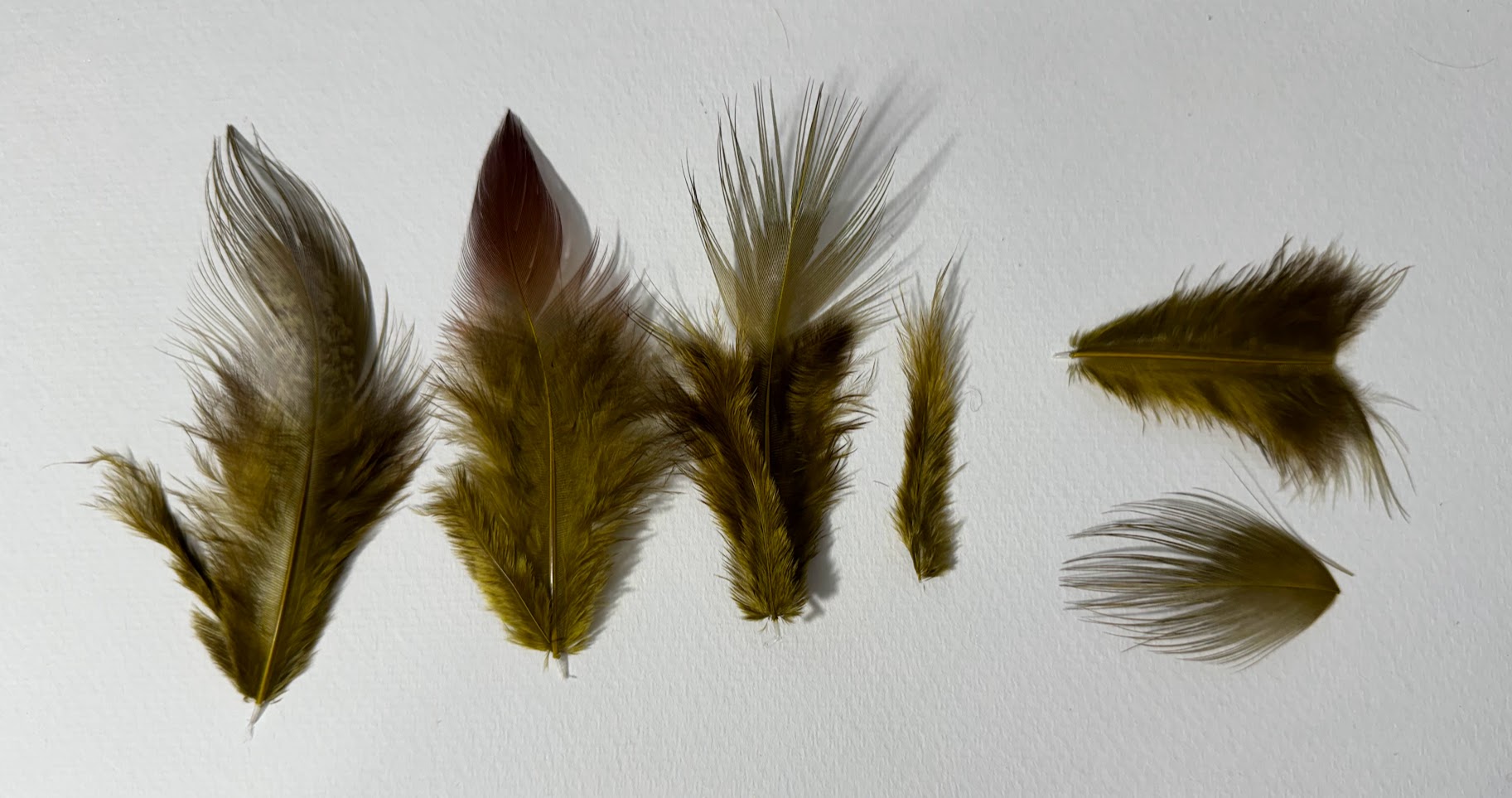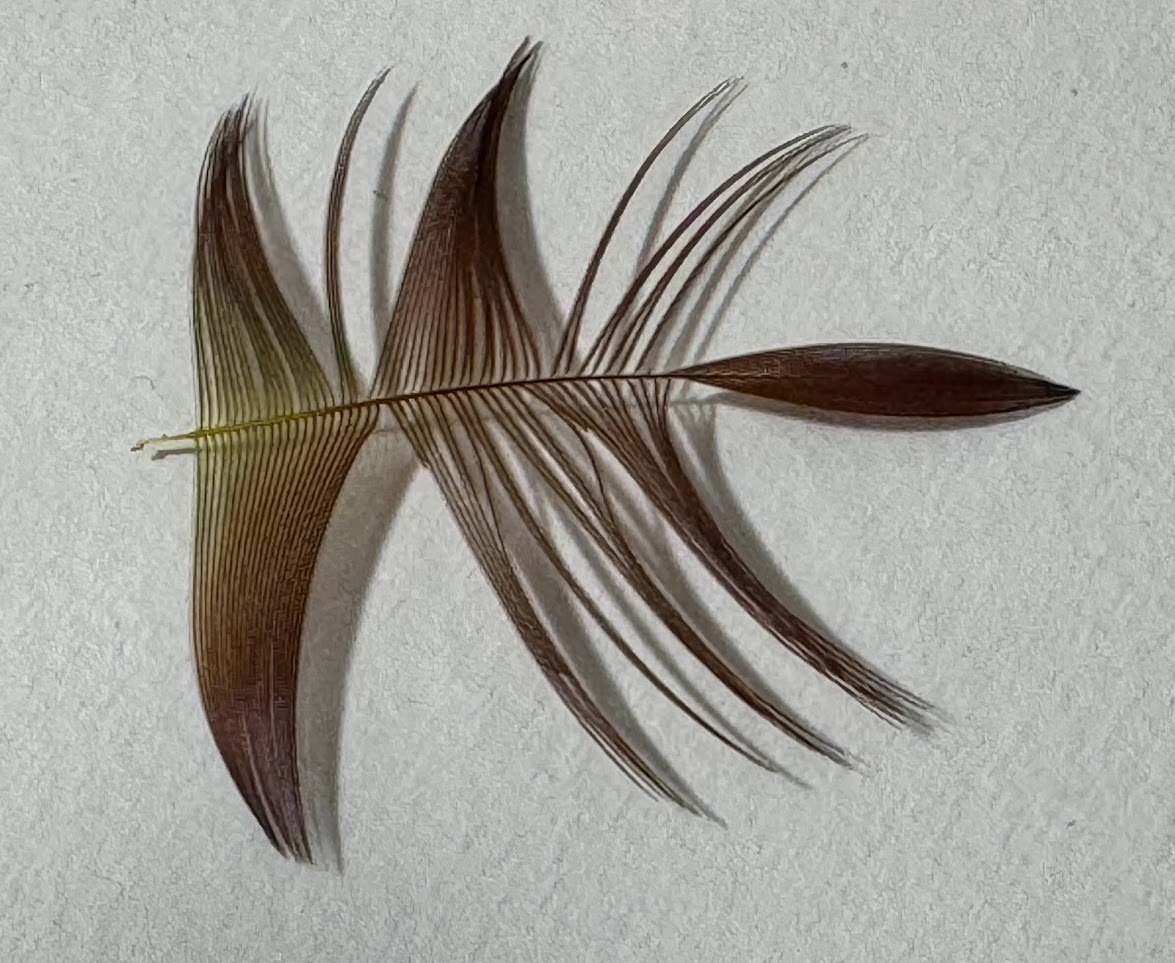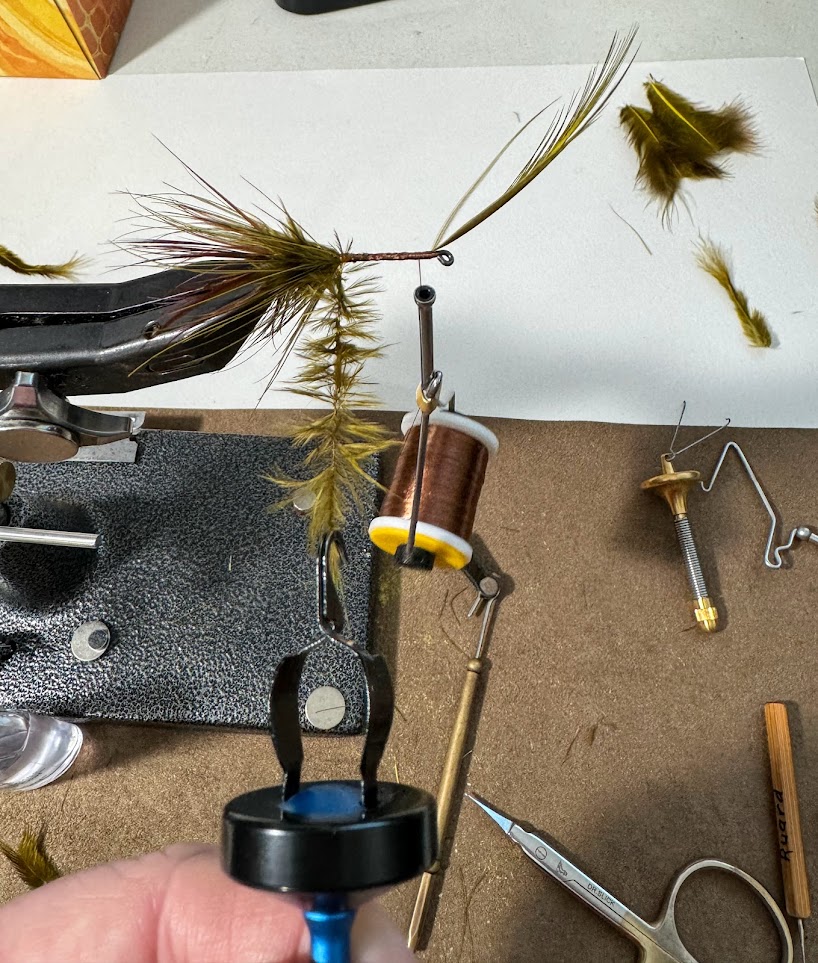Clitellata Hirudinea (soft hackle pheasant tail leech imitation)
Posted: Mon Nov 20, 2023 10:25 am
Clitellata Hirudinea (fun to say - fun to fish - soft hackle leech)
Hook - Mustad Alpha Point Limerick Streamer/Model L87AP (Size 8)
Thread - 140 Denier Ultra Thread (Rusty Brown)
Collar Tail - Ringneck Pheasant Flank Feather (Auburn Brown)
Rear Body - Ringneck Aftershaft/Philoplume Feathers (Olive)
Body Hackle - Ringneck Pheasant Rump Feather (Olive)
Middle Body - Ringneck Aftershaft/Philoplume Feathers (Olive)
Front Body - Ringneck Feather Marabou (Olive)
Front Hackle Collar - Ringneck Pheasant Rump Feather (Olive)
Head - Tying Tread (whip finished and coated with SHHAN clear nail polish)


Some of the tools I used to tye this pattern.

Ringneck Pheasant Rump Feathers:


Preparing Feather for tying - Separate Tip Section and Pull back most of the fibers to reveal the center tip section (part used for tying in the rear and body hackle)

Mount the hook in the vice, tye in the front collar hackle and then the rear tail hackle.

Grasp the center stem in your hackle pliers, gently fold the fibers rearward and wrap forward in close touching turns.

Secure stem with a few wraps of tying thread.

Behind most of the rump feathers you will find these delicate aftershaft (philoplume) feathers. Keep these for the rear body hackle. I tye them in by the thicker end (bird end), and reinforce them in a thread dubbing loop.

Carefully twist the feather in a thread dubbing loop, stopping occasionally to run a bodkin needle backwards along loop to flare the fibers outwards before wrapping.

Tye in another prepared rump hackle (tye in by the triangular tip section)


Repeat process for next plume section






Brush out the fly to make sure body if fluffy and hackle fibers radiate in all directions.

Pinch body to force hackle fibers to extend backwards around the body to the fly.

Apply head cement.

You could also use a folding block to use the entire feather in a dubbing loop.

Clipped and ready for tying the next leech.

The finished fly has a nicely tapered profile (very leech like shape) and a "squishy" soft-core texture for the body (added fish appeal).
Can't wait to give these a swim!
Hook - Mustad Alpha Point Limerick Streamer/Model L87AP (Size 8)
Thread - 140 Denier Ultra Thread (Rusty Brown)
Collar Tail - Ringneck Pheasant Flank Feather (Auburn Brown)
Rear Body - Ringneck Aftershaft/Philoplume Feathers (Olive)
Body Hackle - Ringneck Pheasant Rump Feather (Olive)
Middle Body - Ringneck Aftershaft/Philoplume Feathers (Olive)
Front Body - Ringneck Feather Marabou (Olive)
Front Hackle Collar - Ringneck Pheasant Rump Feather (Olive)
Head - Tying Tread (whip finished and coated with SHHAN clear nail polish)
Some of the tools I used to tye this pattern.
Ringneck Pheasant Rump Feathers:
Preparing Feather for tying - Separate Tip Section and Pull back most of the fibers to reveal the center tip section (part used for tying in the rear and body hackle)
Mount the hook in the vice, tye in the front collar hackle and then the rear tail hackle.
Grasp the center stem in your hackle pliers, gently fold the fibers rearward and wrap forward in close touching turns.
Secure stem with a few wraps of tying thread.
Behind most of the rump feathers you will find these delicate aftershaft (philoplume) feathers. Keep these for the rear body hackle. I tye them in by the thicker end (bird end), and reinforce them in a thread dubbing loop.
Carefully twist the feather in a thread dubbing loop, stopping occasionally to run a bodkin needle backwards along loop to flare the fibers outwards before wrapping.
Tye in another prepared rump hackle (tye in by the triangular tip section)
Repeat process for next plume section
Brush out the fly to make sure body if fluffy and hackle fibers radiate in all directions.
Pinch body to force hackle fibers to extend backwards around the body to the fly.
Apply head cement.
You could also use a folding block to use the entire feather in a dubbing loop.
Clipped and ready for tying the next leech.
The finished fly has a nicely tapered profile (very leech like shape) and a "squishy" soft-core texture for the body (added fish appeal).
Can't wait to give these a swim!